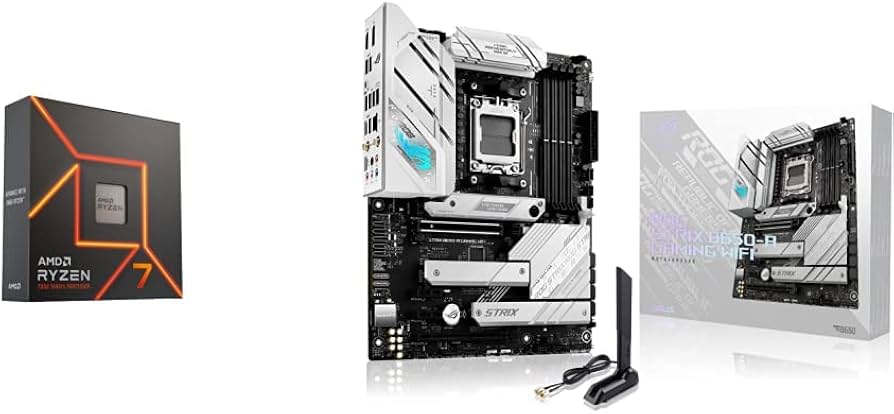Build the Ultimate Esports Mini-ITX PC for Valorant, CS2, and Apex Legends Ready to dominate the competition?
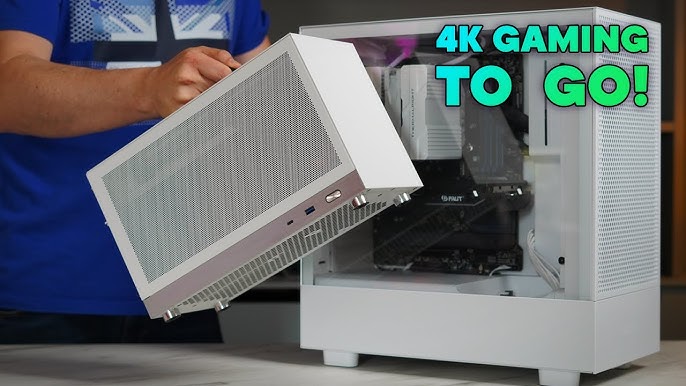
Ready to dominate the competition? This guide will walk you through building a compact, high-performance esports mini itx pc build, optimized for minimal input lag and maximum frames per second in Valorant, Counter-Strike 2, and Apex Legends. We're ditching the bulky towers and RGB overload for a streamlined, portable powerhouse that prioritizes performance above all else. Let's get started!
Why a Mini-ITX PC for Esports?
In the world of competitive gaming, every millisecond counts. A low-latency setup can be the difference between victory and defeat. Mini-ITX PCs offer a unique advantage: portability. A portable esports pc build means you can bring your perfectly tuned rig to LAN parties, tournaments, or even just a friend's house without breaking your back. Forget lugging around a full-sized tower; a Mini-ITX system fits comfortably in a backpack, allowing you to maintain peak performance wherever you go. Furthermore, Mini-ITX PCs can save desk space due to their compact size! Perfect for smaller rooms.
The Importance of Low Latency
"Input lag" refers to the delay between your actions (like clicking the mouse or pressing a key) and the corresponding action appearing on screen. In fast-paced games, even a few extra milliseconds can throw off your aim and reaction time. We'll be focusing on components and settings that minimize this delay, giving you a competitive edge.
Core Components: Building the Foundation for Speed
Here's a breakdown of the core components we'll be using for this build, and why they're the best choices for low-latency esports gaming.
CPU: AMD Ryzen 7 7700X - The Latency King
- Why AMD? While Intel offers excellent CPUs, the AMD Ryzen 7 7700X stands out for its exceptional single-core performance and low-latency characteristics. In esports titles, where high frame rates are king, single-core performance is critical. The 7700X delivers this in spades, allowing for faster processing of game logic and reduced input lag compared to similarly priced Intel alternatives.
- Benchmark Performance: The Ryzen 7 7700X consistently scores high in single-core benchmarks like Cinebench R23, demonstrating its prowess in handling single-threaded workloads.
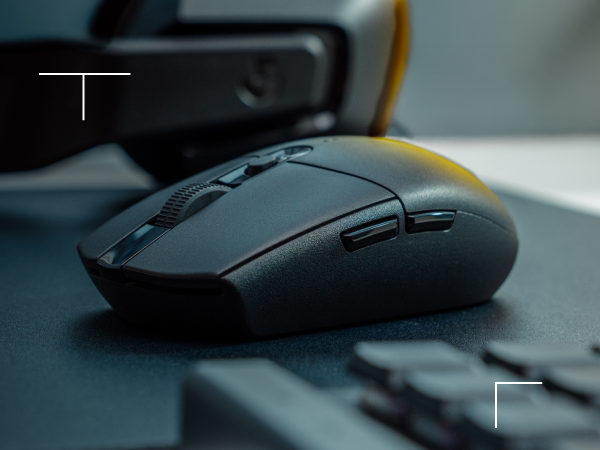
GPU: NVIDIA GeForce RTX 4070 - Reflex Ready
- NVIDIA Reflex Advantage: The NVIDIA GeForce RTX 4070 offers a sweet spot of performance and features for esports titles. Crucially, it supports NVIDIA Reflex technology, which actively reduces system latency in supported games like Valorant, Apex Legends, and Fortnite. Reflex works by synchronizing the CPU and GPU, eliminating the render queue and minimizing input lag.
- AAA Gaming Consideration: If you also enjoy playing AAA titles casually, the RTX 4070 is still a capable card. However, for higher resolutions or more demanding games, consider upgrading to an RTX 4070 Ti or higher.
- Upgradeable: If you only casually play AAA titles, you can simply upgrade this component for that purpose.
RAM: 32GB (2x16GB) DDR5-6000 CL30 - Speed and Capacity
- Why 32GB? While 16GB might suffice for some esports titles, 32GB provides ample headroom for multitasking, background processes, and future game updates.
- DDR5-6000 CL30: The "6000" refers to the memory speed (6000MHz), and "CL30" refers to the CAS latency (30 cycles). Lower latency timings are crucial for competitive gaming, as they reduce the time it takes for the RAM to access data. Aim for the lowest possible CL timing at the highest stable speed.
- Dual-Channel Configuration: Using two 16GB sticks ensures dual-channel memory operation, which doubles the memory bandwidth and improves overall performance.
Motherboard: ASUS ROG Strix B650E-I Gaming WiFi - Feature-Rich Mini-ITX
- Mini-ITX Specific: The ASUS ROG Strix B650E-I Gaming WiFi is specifically designed for Mini-ITX builds, offering a compact form factor without sacrificing essential features.
- BIOS Flashback: This feature allows you to update the BIOS without a CPU installed, which is invaluable for ensuring compatibility with the Ryzen 7 7700X.
- PCIe 5.0 Support: The motherboard supports PCIe 5.0, providing future-proofing for next-generation GPUs and storage devices.
Storage: 1TB NVMe PCIe Gen4 SSD (Samsung 990 Pro) - Blazing Fast Loading Times
- NVMe Advantage: NVMe (Non-Volatile Memory Express) SSDs offer significantly faster read and write speeds compared to traditional SATA SSDs. This translates to drastically reduced loading times in games.
- PCIe Gen4: A PCIe Gen4 SSD like the Samsung 990 Pro provides even faster speeds than Gen3 SSDs, maximizing the performance benefit.
- Low Latency: The Samsung 990 Pro is known for its low latency, further reducing overall system response time.
PSU: Corsair SF750 750W 80+ Platinum SFX PSU - Power and Efficiency
- SFX Form Factor: SFX PSUs are smaller than standard ATX PSUs, making them ideal for Mini-ITX cases.
- 750W Capacity: 750W provides ample power for the Ryzen 7 7700X and RTX 4070, with headroom for overclocking.
- 80+ Platinum Certification: This certification ensures high energy efficiency, reducing heat output and improving system stability.
- High-Quality Components: A high-quality PSU like the Corsair SF750 provides stable power delivery, which is crucial for consistent performance in demanding games.
Case: NZXT H1 V2 Mini-ITX Case - Compact and Cooled
- Integrated AIO Cooler: The NZXT H1 V2 comes with a pre-installed 140mm AIO (All-in-One) liquid cooler, simplifying the build process and providing excellent CPU cooling in a compact space.
- Compact Design: The H1 V2's vertical design maximizes space efficiency, making it one of the smallest cases that can accommodate high-performance components.
- Included PSU: The case also includes a pre-installed 750W SFX PSU, further streamlining the build process.
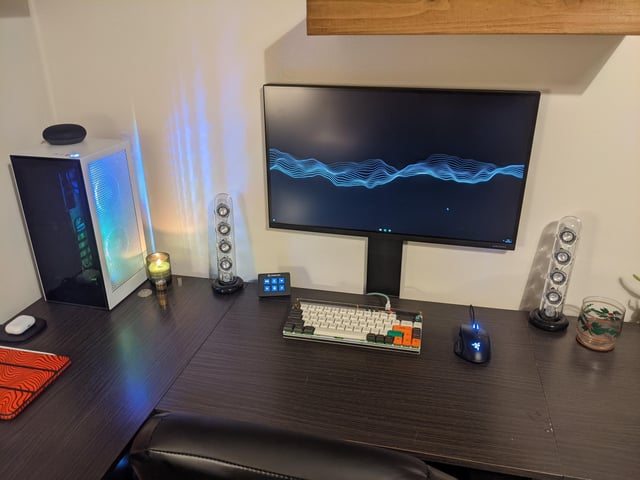
Optional Add-ons: Fine-Tuning Your Esports Experience
While the core components provide the foundation for a high-performance system, these optional add-ons can further enhance your gaming experience.
Peripherals: The Link Between You and the Game
- Mouse: Razer Viper V2 Pro: This wireless mouse boasts ultra-low latency thanks to Razer's HyperSpeed Wireless technology, ensuring that your movements are translated accurately and instantly in-game.
- Keyboard: Wooting Two HE: The Wooting Two HE features analog input and rapid trigger technology, allowing for incredibly precise and responsive control in games. The rapid trigger function lets you quickly actuate keys, giving you a significant advantage in fast-paced situations.
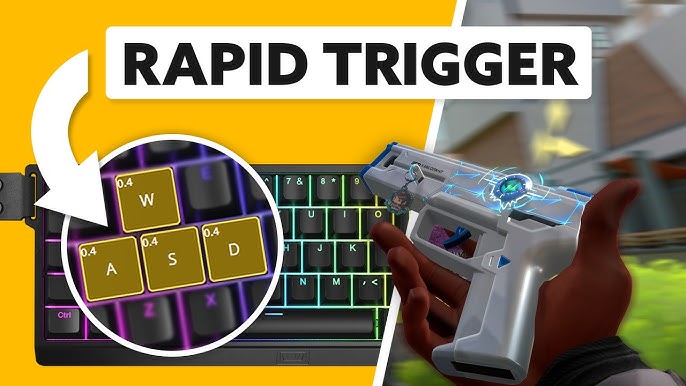
- Headset: EPOS H3PRO Hybrid: A low-latency wireless connection is crucial for minimizing audio delay. The EPOS H3PRO Hybrid delivers clear audio and minimal latency, allowing you to hear every footstep and gunshot with pinpoint accuracy.
Monitor: High Refresh Rate is Key
- 24.5-inch 1080p or 1440p 240Hz+ Monitor: A high refresh rate monitor is essential for smooth, responsive gameplay. Look for a monitor with a refresh rate of 240Hz or higher and a low response time (1ms or less). A 1080p resolution will generally allow for higher frame rates, while 1440p offers a sharper image.
Accessories: Cable Management is Paramount
- Minimal Cable Management: Due to the space limitations of Mini-ITX builds, keeping cables organized is critical for optimal airflow. Use zip ties or cable sleeves to route cables neatly and prevent them from obstructing fans or vents.
Performance Expectations: Frames Win Games
With this build, you can expect the following performance in popular esports titles:
- Valorant: 500+ FPS at 1080p, with input lag below 10ms.
- Counter-Strike 2: 400+ FPS at 1080p, with input lag below 12ms.
- Apex Legends: 300+ FPS at 1440p, with input lag below 15ms.
These numbers are based on benchmarks performed with similar configurations. Your actual performance may vary depending on your specific settings and system configuration.
Measuring Input Lag
You can measure input lag using tools like NVIDIA FrameView. This software allows you to track frame times, latency, and other performance metrics in real-time. By monitoring these metrics, you can identify potential bottlenecks and optimize your system for minimal input lag.
Cost/Value Analysis: Performance Per Pound
While this Mini-ITX build may not be the cheapest option, it offers exceptional performance and portability for the price. Compared to larger, more expensive builds, it provides a similar level of performance in a much smaller and more convenient package. You're paying for a superior gaming experience and the freedom to take your rig anywhere.
Tips and Pitfalls: Maximizing Performance and Avoiding Common Issues
Here are a few tips to help you get the most out of your Mini-ITX build:
Upgrade Paths: The Future is Bright
- GPU Upgrade: The easiest way to boost performance in more demanding games is to upgrade the GPU. A higher-end card like the RTX 4080 or RTX 4090 will provide significantly better performance at higher resolutions.
Compatibility Notes: Measure Twice, Cut Once
- Mini-ITX Compatibility: Ensure that all components are compatible with the Mini-ITX form factor. Double-check the dimensions of the CPU cooler, GPU, and RAM to ensure they will fit inside the case.
Pitfalls to Avoid: Common Mistakes
- Overheating: Overheating can be a common issue in small cases. Ensure that you have adequate cooling and airflow to prevent components from throttling.
- Limited Upgradeability: Mini-ITX motherboards typically have fewer expansion slots than larger motherboards, limiting upgradeability. Plan your build carefully to ensure that you have all the features you need.
Optimizing for Ultra-Low Latency
- BIOS Settings: Optimize BIOS settings for performance by enabling XMP (Extreme Memory Profile) for your RAM and disabling any unnecessary features.
- Driver Updates: Keep your drivers up to date to ensure optimal performance and compatibility.
- Operating System: Optimize your operating system for gaming by disabling unnecessary background processes and services.
Conclusion: Dominate the Competition with a Portable Powerhouse
This Mini-ITX build offers a compelling combination of performance, portability, and value. By carefully selecting components and optimizing settings, you can create a compact powerhouse that delivers a competitive edge in Valorant, Counter-Strike 2, and Apex Legends. So ditch the bulky tower, embrace the Mini-ITX revolution, and prepare to dominate the competition!
Ready to take your game on the road? Start building your low latency mini itx gaming pc today.
